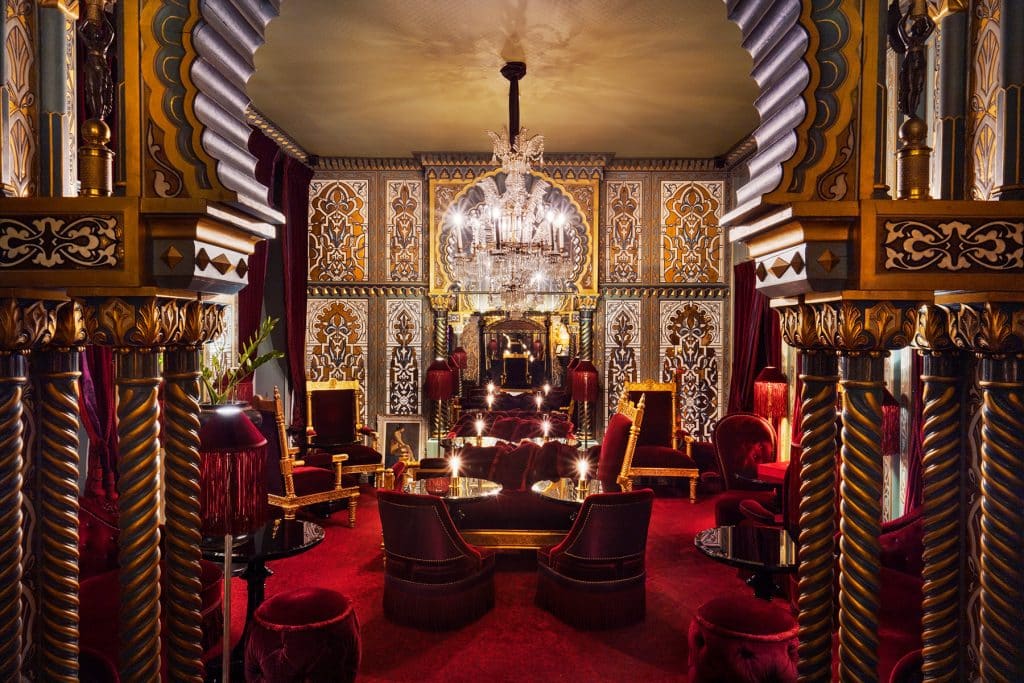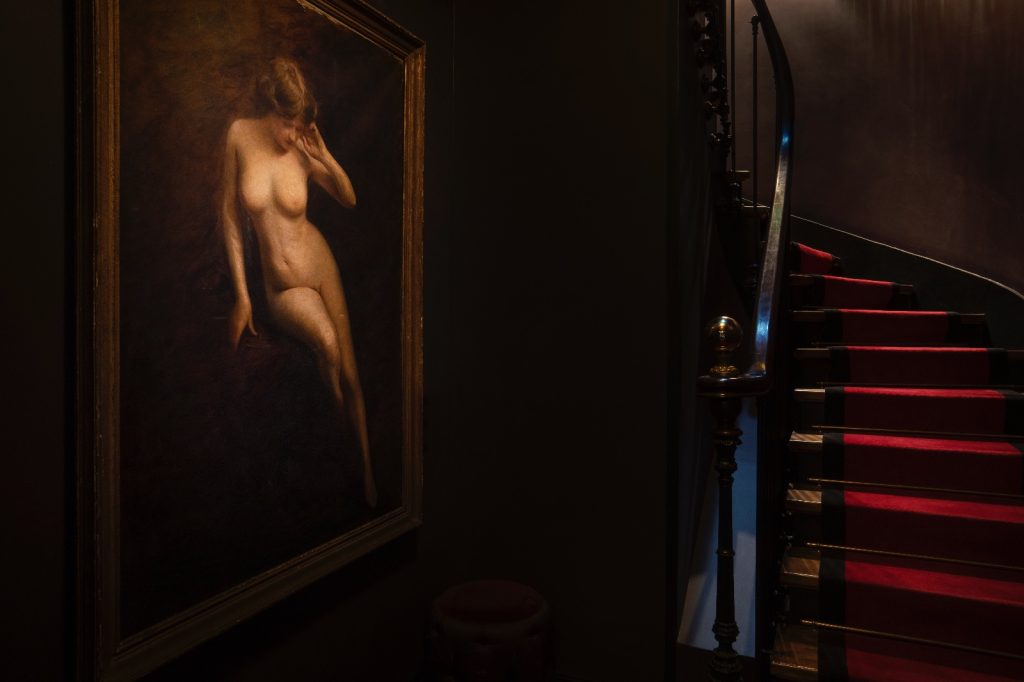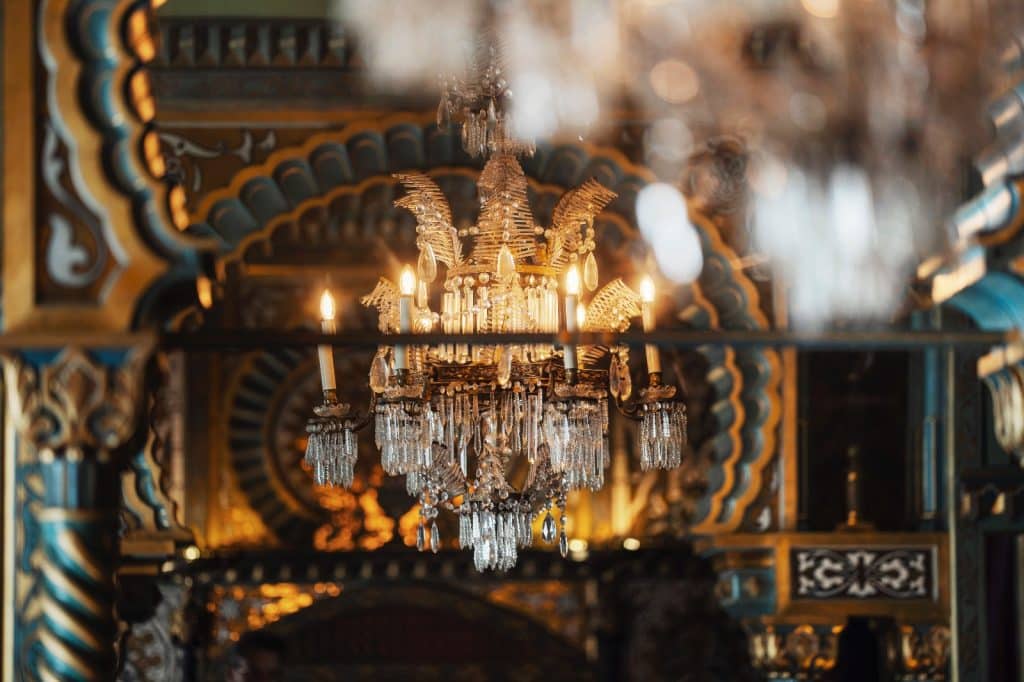
Awarded “the most romantic hotel in the world,” Maison Souquet offers a unique setting for lovers of discreet hideaways and secret rendezvous.
Inspired by the most prestigious pleasure houses of the Belle Époque, its decor resurrects the splendors of these festive places, when Paris was the center of the world.
La Belle Otero
In tribute to those who made Belle Époque Paris vibrant, Maison Souquet reinvents the romantic atmosphere of these luxurious and theatrical brothels where demi-mondaines bestowed their favors upon admirers with illustrious names, before captivating Paris and the world.
Of Maison Souquet, which was listed in the register of pleasure houses and opened its doors in 1905, few traces remain. Therefore, the challenge has been to imagine it as it might have existed, at a time when Montmartre was a hub of Parisian revelry. Cafés, dance halls, and brothels blossomed at the doorstep of the Butte, around the Moulin Rouge where Jane Avril and La Goulue whirled, depicted with humanity by Toulouse-Lautrec. Having himself lived in a pleasure house in the neighborhood, the painter would not feel out of place seeing the two red lanterns signaling the entrance to the hotel, a nod to its past purpose.
In the heart of this tranquil Rue de Bruxelles where Emile Zola, the author of Nana, once lived, Maison Souquet thus revives an entire era, with the sole aim of evoking enchantment and offering its guests timeless moments

During the Belle Époque, Paris sparkles with a thousand lights. Boulevards, theaters, and cafes attract those who wish to see and enjoy themselves, in the excitement of the end of the century that marks the triumph of the “light woman.”
Since the inauguration of the Moulin Rouge in 1889, Montmartre, then a simple hamlet populated by about ten windmills, became the meeting place for bohemian and artistic Paris. Painters and writers, as well as dandies and “people of the world,” came to revel in this district as joyful as it was popular, inhabited by mischievous and delightfully immoral women. Just as poets and writers—Maupassant, Oscar Wilde, Colette, Apollinaire, or Prévert—alongside painters like Renoir, Van Gogh, and Toulouse-Lautrec, were seduced by the bohemian scent emanating from the neighborhood: all captured on canvas or paper this still rustic Butte and its pleasure houses where passing clients, regulars, and ardent lovers could let their desires wander freely. Through their whimsy and erotic aura, these enclosed worlds, pulsating hearts of nightlife, beautifully illustrate this Belle Époque hungry for success, pleasure, and adventure.

Courtesans, queens of Paris
They are called “girls of joy,” streetwalkers, demimondaines, grandes horizontales, or courtesans, depending on whether they haunt the streets of the capital, live in the shadow of brothels, or own sumptuous private mansions offered by their lovers, mostly celebrities from aristocracy or finance.
They have voluptuous forms, waists constrained in corsets, and a rebellious air, coming from modest backgrounds or having experienced a reversal of fortune. They are named Margot, Blanche, Mimi, Emma, Apollonie, Carmen, Céleste, and their stories remain mysterious; La Castiglione, Cléo de Mérode, Liane de Pougy, La Belle Otero, or La Païva, and their lives, as luxurious as they were romantic, are intimately linked to the century.
These femme fatales often began on stage. Favored by all, they could choose at their discretion whom they would make whirl in sensuality, heart, and… fortune. Nothing was too beautiful for them: grand restaurants, diamond jewelry, and sumptuous attire purchased from Worth or Doucet. Because, in this era of intense social mobility, haute couture worked as much for the women of the “beautiful world” as for Liane de Pougy, La Castiglione, or La Belle Otero… In this golden age of spectacle, courtesans were the queens of Paris!
Maison Souquet revives their memory by naming its twenty rooms and suites after them
Book directly and enjoy exclusive benefits
Best rate guaranteed
Early check-in & late check-out (subject to availability)
Personalized room décor selection
Exclusive access to your time slot at the Salon d’Eau
Book directly and enjoy exclusive benefits
Best rate guaranteed
Early check-in & late check-out
(subject to availability)
Personalized room décor selection
Exclusive access to your time slot at the Salon d’Eau